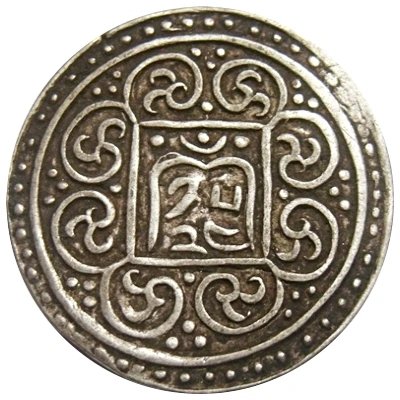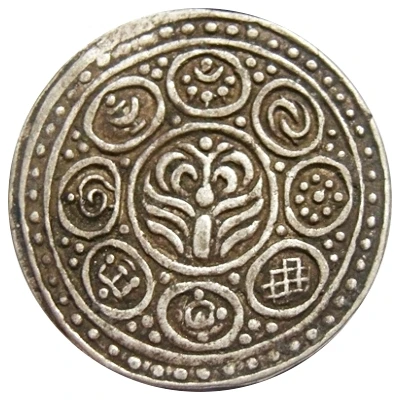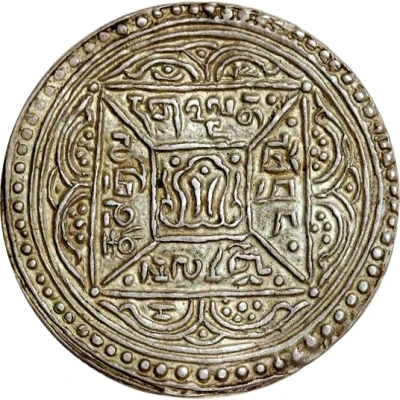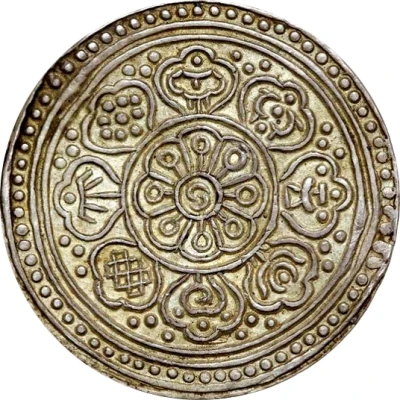


© Parimal (CC BY-NC-SA)
1 Tangka "Kong-par Tangka"; type 4; single circle
| Silver | 4.30 g | 26 mm |
| Issuer | Tibet (China) |
|---|---|
| Period | Ganden Phodrang (1642-1959) |
| Type | Standard circulation coin |
| Years | 24-25 (1890-1891) |
| Calendar | Tibetan (16th cycle) |
| Value | 1 Tangka |
| Currency | Tangka (1640-1959) |
| Composition | Silver |
| Weight | 4.30 g |
| Diameter | 26 mm |
| Shape | Round |
| Orientation | Medal alignment ↑↑ |
| Demonetized | Yes |
| Updated | 2024-10-04 |
| Numista | N#139001 |
|---|---|
| Rarity index | 84% |
Reverse
Ornate lotus design within single circle surrounded by the Buddhist Eight Auspicious symbols (a white parasol, a conch shell, a treasure vase, a victory banner, a dharma wheel, a pair of golden fish, an endless knot, and a lotus flower) within the petals of an eight-petalled lotus.
Edge
Plain
Interesting fact
One interesting fact about this coin is that it features a unique blend of Tibetan and Chinese design elements. The obverse side of the coin bears the image of a sitting Buddha, a common motif in Tibetan art, while the reverse side features the Imperial Chinese dragon, a symbol of the Qing dynasty that ruled China at the time. This blending of cultural styles reflects the complex history and political dynamics of Tibet during the late 19th century.

